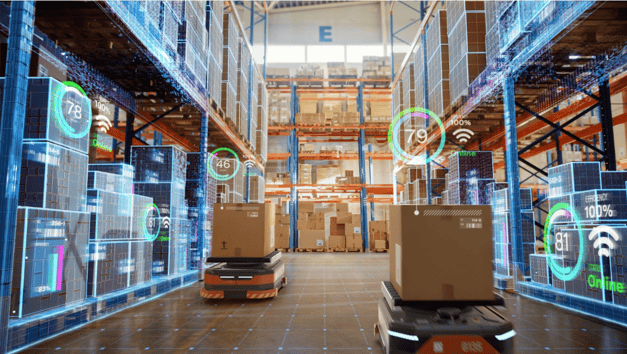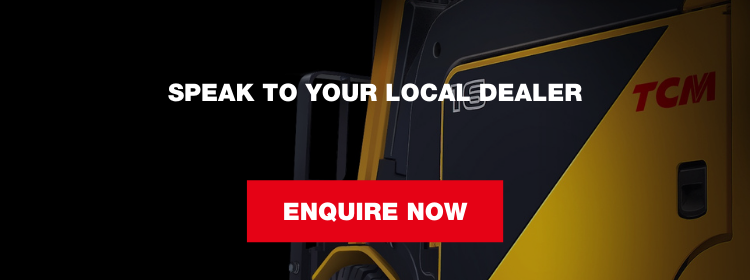Share Article

The world around us is constantly changing. With fuel prices rising, the effects of the global pandemic, and the ever-present concern of climate change, being adaptable, ensuring you’re up to date with significant changes, and future-proofing your operations is essential.
You might be thinking I’m turning a profit consistently, ‘I don’t need to be future-proof?’ Or ‘I’m already using software in my operations, surely that’s all future-proofing is?’ But there’s more to maintaining the longevity of your organisation than just turning a profit and keeping up to date with digital.
Read on to discover 4 key points that are relevant and necessary for future-proofing your material handling operations.
Invest in operator training
Investing in operator training is a surefire way to guarantee that your team is proficient in their field. With many companies moving towards electrification, training your staff on new equipment such as electric-counterbalance forklifts is essential. Failing to adequately train your staff, or not upholding a required standard of training will not only harm your material handling operations in terms of efficiency and productivity, but it puts the safety of your staff at risk, too.
Well-trained operators and warehouse staff are able to take complete control over their activities, enabling autonomy which reduces downtime. Additionally, upholding levels of training makes it easier to implement things like new technologies, advanced processes, and different equipment.
Driver training is a legal requirement for those operating forklift trucks. To find out more about our forklift driver training, speak to your nearest TCM dealer today.
Invest in ergonomics
Advanced, ergonomic technology exists and should be utilised for the benefit of both your warehouse operations and your operators. Investing in ergonomically-designed warehouse equipment maximises efficiency and comfort, and enables workers to function safely throughout your warehouse or site.
Equipment such as electric counterbalance forklifts, order pickers, pallet trucks, reach trucks and stacker trucks that are ergonomically designed enable operators to access controls with ease and facilitate smooth manoeuvrability around the narrow aisles of a warehouse or on a crowded site. Factors such as ergonomic placement hugely contribute to operator comfort and efficiency. Take the likes of intuitive controls, cleverly designed pedals that reduce fatigue, and flexible seat positioning, for example, these ergonomically-designed elements enable your staff to work in a natural, supported way without compromising on the likes of warehouse visibility or well-being.
Investing in ergonomically designed equipment will help to reduce downtime, and prevent injuries like RSI (repetitive strain injury) and long-term injuries to operators. By improving operator productivity, increasing warehouse efficiency, and investing in the right equipment that better utilises space and reduces maintenance costs, you will be working towards effectively reducing your TCO.
Are you keen to reduce the TCO (total cost of ownership) of your forklift fleet, but unsure where to start? This free guide has all the answers you need.
Invest in green practices: electricity, solar, and packaging
It’s no secret that moving towards greener, more sustainable practices is essential in today’s current climate. By doing your part to help the environment in terms of investing in electric-powered machines, renewable energy, and eco-packaging or recyclable materials, you will also be working towards more sustainable material handling operations that benefit your bottom line.
Electricity
Electric-powered machines do not emit exhaust fumes or toxic gases and produce zero emissions. This benefits the health of both the environment and those working in the surrounding area. Additionally, electric forklifts use lithium-ion or lead-acid batteries which are rechargeable and can be recycled. Incorporating electric machinery into your operations will help to reduce harmful CO2 emissions and lower your carbon footprint.
Related read: How Our Electric Counterbalance Range Ensures Operator Safety
Solar
Warehouses are large. This means that most warehouses have ample roof space that is not being utilised. Installing solar panels on the roof of your warehouse can offer you advantages such as reducing your carbon footprint, generating electricity, and reducing your energy bills.
Packaging
It’s fair to say that you can’t just transform your warehouse or your material handling operations overnight – but taking incremental steps to reduce your environmental impact is a huge step toward acting sustainably and protecting the future of your operations.
Warehouses and material handling operations utilise plenty of packaging. This can involve throwing away a lot of soft plastics that are not easily recyclable. Green packaging options are becoming more widely available as climate change concerns grow. By investing in biodegradable packaging, recyclable materials or the likes of boxes, pallets and crates that can be reused, you can help to reduce unnecessary waste. It’s also important to understand that many customers or clients are invested in sustainability – if you’re a supplier or brand that promotes eco-friendly methods, they will likely choose you over a competitor.
Discover seven ways that you can reduce your warehouse’s environmental impact in this article
Invest in flexibility
For those in the material handling business, fluctuation is not a new concept – from seasonal peaks to changes in demand, inconsistency and variation are commonplace. This has been particularly relevant over the past few years. The COVID-19 pandemic disrupted operations and business globally and across many different industries. Whilst some organisations couldn’t keep up with this, many others thrived.
The key to growing, or even prospering, in an ever-changing environment is flexibility. Smooth, successful and sustainable material handling operations require the ability to adapt, particularly if you’re required to scale up, invest in new equipment, or utilise some machines more than others. You need to be agile when it comes to the setup of your warehouse and respond to consumers’ expectations and demands. One way to ensure adaptability in your warehouse is in its design. You must be able to either:
Accommodate new or different products being purchased or installed, such as material handling equipment and new technology (automation systems)
- accommodate new or different products being purchased or installed, such as material handling equipment and new technology (automation systems)
Or
- Guarantee that your building or site is mapped out in a way that makes the layout of the workspace easier to adapt or redesign
Guarantee that your building or site is mapped out in a way that makes the layout of the workspace easier to adapt or redesign
Are you keen to reduce your TCO but unsure where to start? Discover everything you need to know in this guide
Are you ready to future-proof your material handling operations?
If the past few years have taught us anything, it’s that the world is changing – both predictably and unpredictably. It’s not enough to just sit back and hope that issues like the pandemic or climate change won’t affect your business or operations. The best thing you can do is be prepared and plan ahead – doing so will not only help the environment, your staff, and your organisation, but it will also help your customers and future prospects.
Be seen as adaptable, innovative, and ahead of the curve by future-proofing your material handling operations.
It might not seem like it, but 2030 is not that far away. And it’s never too early to begin planning for the future. By 2030, it will be illegal to sell new gas, diesel, and even hybrid-powered vehicles in the UK.
To determine how your business will adapt, the safety precautions to take, the short vs. long-term costs, and more, ensure you’re well prepared for the future, download your free electrification readiness checklist today and prepare for the future.

.png?width=50)


